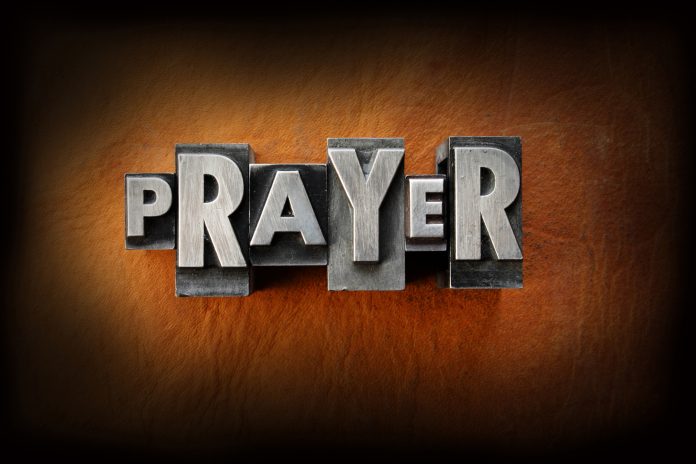
by Alice Ann Pfeifer, CSA
A few months ago, Pope Francis addressed Christians with a new document on the joy of the Gospel. As we celebrate this glorious season of Easter, there is no finer time to take his message to heart. Today’s prayer service is based on two key passages of Evangelii gaudium. It also includes private reflection and shared prayer.
In the prayer space, arrange chairs in a circle around a table covered with a white or gold cloth. Place on the table a lit vigil light and a vase of freshly cut pussy willows, budding twigs, or something similar. (One of the twigs will be used as a Native American talking stick.) Have on hand a music player and soft instrumental music (Native American flute music would be appropriate).You will need a leader and three readers.
Leader: Pope Francis wrote Evangelii gaudium to describe the joy of the Gospel. Let us begin our prayer with a contemplative reading of Evangelii gaudium, n. 5.
First Reader: “The Gospel, radiant with the glory of Christ’s cross, constantly invites us to rejoice. A few examples will suffice.”
Second Reader: “‘Rejoice!’ is the angel’s greeting to Mary (Luke 1:28). Mary’s visit to Elizabeth makes John leap for joy in his mother’s womb (Luke 1:41). In her song of praise, Mary proclaims, ‘My spirit rejoices in God my Saviour’ (Luke 1:47).”
Third Reader: “When Jesus begins his ministry, John cries out: ‘For this reason, my joy has been fulfilled’ (John 3:29). Jesus himself ‘rejoiced in the Holy Spirit’ (Luke 10:21). His message brings us joy: ‘I have said these things to you, so that my joy may be in you, and that your joy may be complete’ (John 15:11).”
All: “Our Christian joy drinks of the wellspring of his brimming heart.”
Leader: “He promises his disciples: ‘You will be sorrowful, but your sorrow will turn into joy’ (John 16:20). He then goes on to say: ‘But I will see you again and your hearts will rejoice, and no one will take your joy from you’ (John 16:22).”
First Reader: “The disciples ‘rejoiced’ (John 20:20) at the sight of the risen Christ.”
Second Reader: “In the Acts of the Apostles we read that the first Christians ‘ate their food with glad and generous hearts’ (2:46).”
Third Reader: “Wherever the disciples went, ‘there was great joy’ (8:8); even amid persecution they continued to be ‘filled with joy’ (13:52). The newly baptized eunuch ‘went on his way rejoicing’ (8:39), while Paul’s jailer ‘and his entire household rejoiced that he had become a believer in God’ (16:34).”
All: “Why should we not also enter into this great stream of joy?”
Play instrumental music and invite all present to ponder the things they love most about Easter and springtime.
After a short time, stop the music and take a twig from the prayer table to be used as a Native American talking stick. While holding it, offer a short prayer of praise for something beautiful about springtime or Easter. Then pass the twig to the person on your left, who does the same. Continue until everyone has offered a short payer.
Leader: Let us conclude our reflection with a few words from Evangelii gaudium, n. 276.
First Reader: “Christ’s Resurrection is not an event of the past; it contains a vital power which has permeated this world. Where all seems to be dead, signs of the resurrection suddenly spring up. It is an irresistible force.”
Second Reader: “Often it seems that God does not exist: all around us we see persistent injustice, evil, indifference and cruelty. But it is also true that in the midst of darkness something new always springs to life and sooner or later produces fruit.”
Third Reader: “On razed land life breaks through, stubbornly yet invincibly. However dark things are, goodness always re-emerges and spreads.”
All: “Each day in our world beauty is born anew, it rises transformed through the storms of history.”
Leader: Let us pray. Glory be to the Father . . .
Sister Alice Ann Pfeifer, CSA, has worked in religious education as a teacher and writer for the past 25 years. She holds a master’s degree in pastoral studies from St. Joseph’s College of Maine and presently resides in Fond du Lac, WI.
Permission is granted to copy for community prayer.
Copyright 2014, Bayard, Inc. All rights reserved. This article is protected by United States copyright and other intellectual property laws and may not be reproduced, rewritten, distributed, redisseminated, transmitted, displayed, published or broadcast, directly or indirectly, in any medium without the prior written permission of Bayard, Inc.
This article was written by the Catechist Staff and appeared in Catechist magazine, August 2014.
Image Credit: Shutter Stock 153536591




